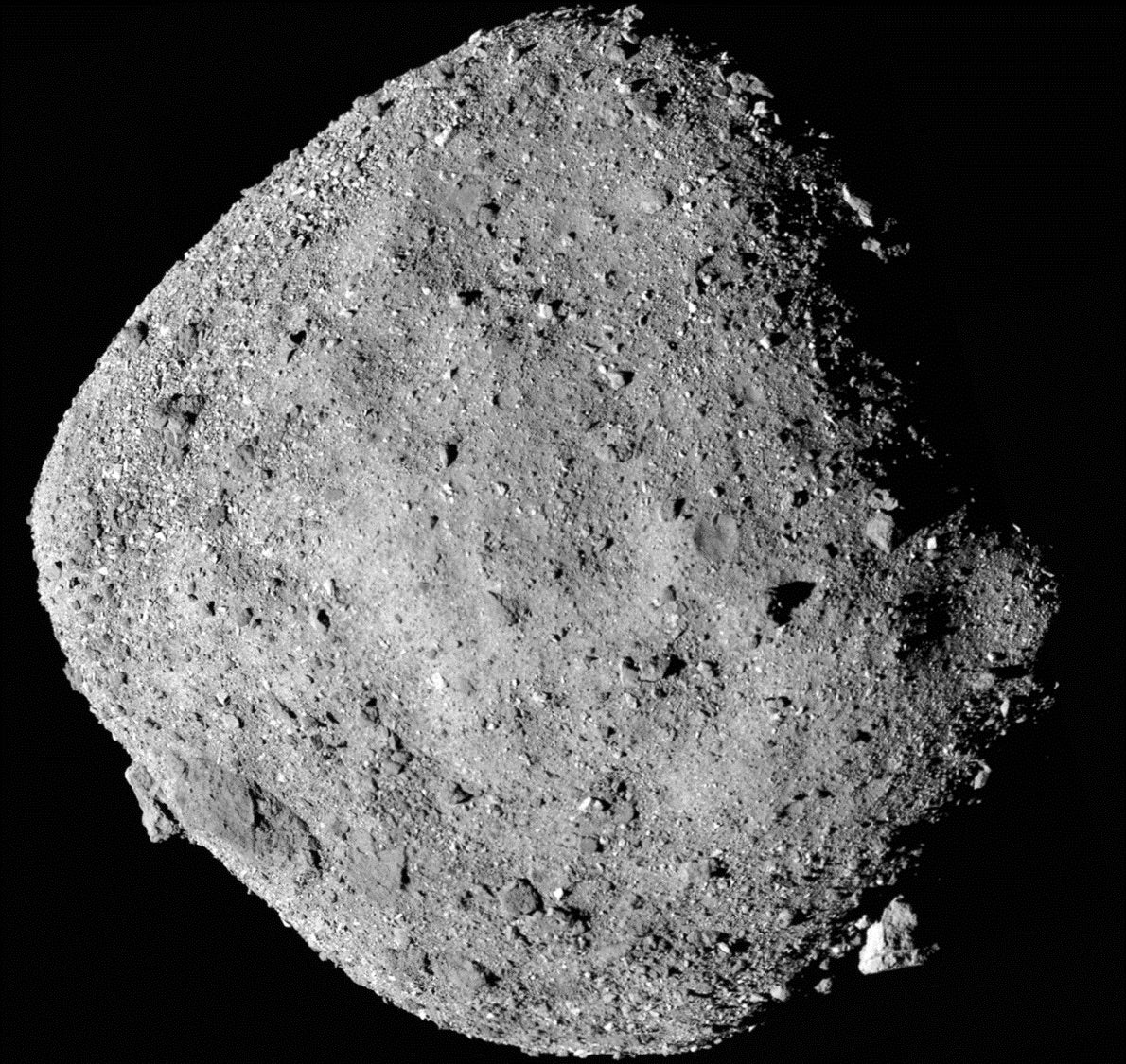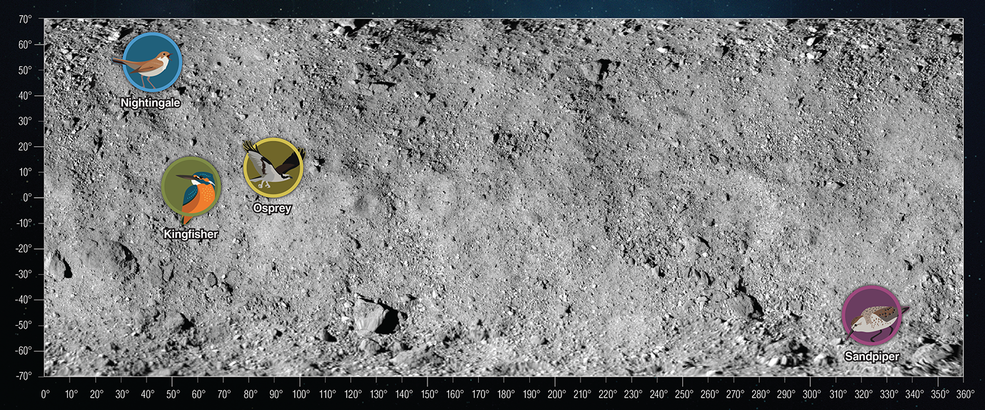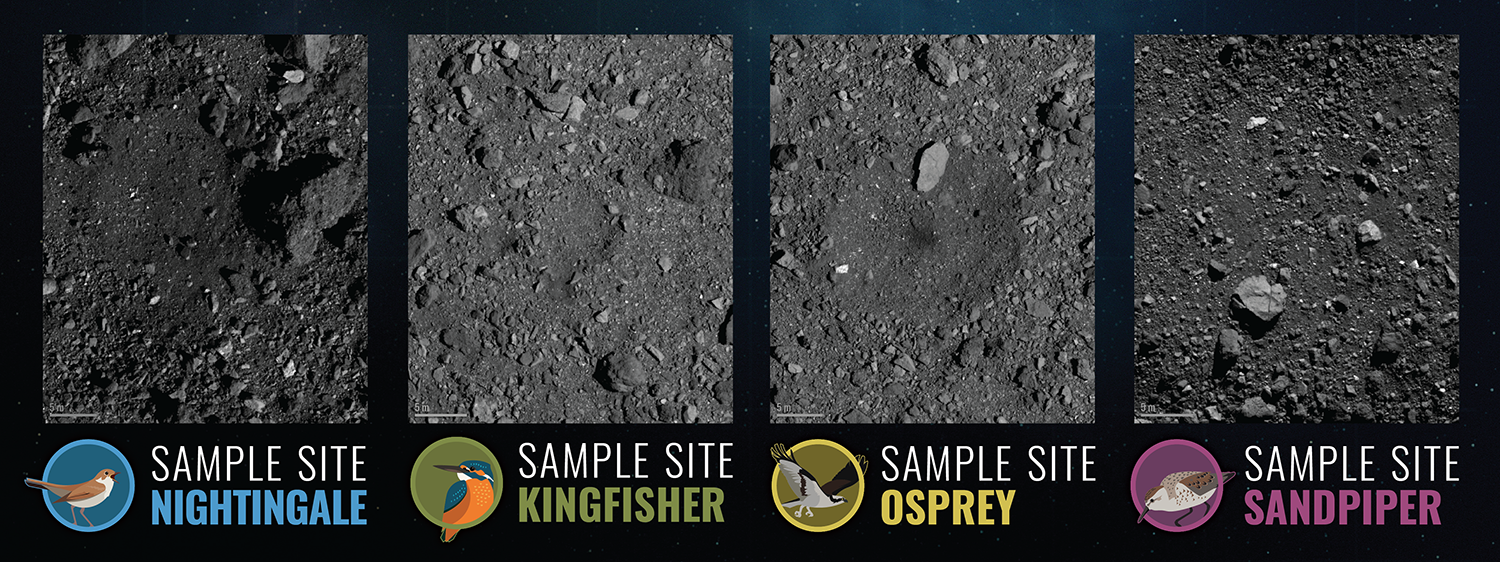
New Images Show Asteroid Bennu Spewing Bits of Itself Into Space
by George DvorskyImages taken by NASA’s OSIRIS-REx spacecraft are helping scientists to understand why small particles are occasionally flying off the surface of Bennu, a nearly spherical asteroid that resembles a spinning top.
Discovered just 20 years ago, Bennu is perhaps most famously known for having the second-highest risk rating on the Palermo Technical Impact Hazard Scale, having a one in 2,700 chance of smashing into Earth between the years 2175 and 2199. Bennu may or may not collide with Earth one day, but we’re learning a lot more about this asteroid and what makes it tick, thanks to NASA’s OSIRIS-REx spacecraft, which has been observing Bennu since October 2018.
Bennu is about 500 metres (1,640 feet) across, and with its bulging equator, it looks a bit like a child’s spinning top. The near-Earth asteroid features a relatively smooth surface, save for a couple of boulders in its southern hemisphere that stick out like gigantic warts. Compositionally, its chemical makeup is similar to carbonaceous chondrite meteorites, which represent some of the oldest known meteorites in the solar system. Bennu is basically a pile of rubble, featuring dense spots and some empty voids within.
As close-up observations taken by OSIRIS-REx’s navigation camera have shown, Bennu is an active asteroid, regularly shedding some of its surface material.

Asteroid Bennu. (Illustration: NASA/Goddard/University of Arizona)
OSIRIS-REx is currently scouting Bennu’s surface in search of a good place to extract samples, which it’s scheduled to do next year. Over the course of its observations, however, the spacecraft has seen several episodes in which the asteroid flung small bits and pieces of itself into space. These observations initially caused alarm at NASA, with mission scientists worrying that the spacecraft might be in danger of getting whacked. They eventually decided that OSIRIS-REx was safe and no countermeasures were necessary, allowing OSIRIS-REx to keep making up-close observations.
New research published Thursday in Science describes this shedding behaviour in detail, while offering some explanations as to why it’s happening.
Indeed, why Bennu should be doing this is not immediately obvious, given that the object is an asteroid and not a comet. Comets, which are packed with large quantities of ice, are famously known for having active surfaces, forming comas and long tails of gas and dust when near the Sun. Asteroids, though diverse in terms of their composition, aren’t as exciting from a visual perspective, but a subset known as active asteroids feature dynamic surfaces.
From our vantage point on Earth, we can see thousands upon thousands of asteroids, but it’s extremely difficult to observe what’s happening on their surfaces from so far away. That said, astronomers have previously documented the shedding of materials from active asteroids using ground-based telescopes, but they’re quite rare, with only a handful having been documented since the 1990s, including the active asteroid (6478) Gault.
Less obvious, however, are active asteroids that shed small amounts of material into space, like Bennu. The OSIRIS-REx mission is giving us an unprecedented view of this process, allowing scientists to finally get a handle on the phenomenon.
Planetary scientist Dante Lauretta, the first author of the new study and a researcher from the Lunar and Planetary Laboratory at the University of Arizona, and his colleagues studied the close-up shots of Bennu’s shedding events. Nearly a dozen individual episodes have been chronicled, but the new paper looked at the three largest events, all of which happened earlier this year.
These events appeared as tiny bright dots of light in the OSIRIX-REx photographs. The researchers estimated the size of the particles at just a few centimetres, which were seen moving just above the asteroid’s surface. During each of the three events, between 72 and 200 of these tiny particles left the surface, and all three events transpired during the afternoon on Bennu – the warmest part of the asteroid’s brief 4.3-hour day. Some of these rejected remnants remained in Bennu’s orbit for a few days prior to reuniting with the surface, but some pieces managed to escape altogether, drifting away into space.
A model showing the trajectories of particles ejected on 19 January 2019. (GIF: Lauretta et al., Science (2019)/Gizmodo)
Lauretta and his colleagues ruled out several possible causes for these ejections, namely ice sublimation (when ice converts directly to vapour, bypassing the liquid stage), rotational disruption (in which a high rate of spin can cause asteroid to break apart), and electrostatic effects. Instead, the shedding events were attributed to a multifaceted process involving collisions with micro-meteorites, dehydration, and thermal stress fracturing – all of which are conspiring, either individually or collectively, to cause particles to leave Bennu’s surface.
That thermal fracturing might be involved is no joke, as surface temperatures on Bennu oscillate wildly. At the asteroid’s mid-latitudes, where two of the three shedding events occurred, the surface temperatures dropped to a low of 250 Kelvin (-23 degrees Celsius, -10 degrees Fahrenheit) but then swung to a high of 400 Kelvin (127 degrees C, 260 degrees F), according to the new paper. This causes cracks to form, which destabilises surface materials.
This mission is far from over, as OSIRIS-REx is scheduled to collect surface samples in 2020, with a scheduled return date to Earth in 2023.

Flat projection image showing the surface of Bennu and the four proposed landing sites. (Image: NASA/Goddard/University of Arizona)
NASA is currently trying to figure out the best spot for the spacecraft to land and is eyeing four locations in particular, dubbed Nightingale, Kingfisher, Osprey, and Sandpiper.

The four candidate landing sites on Bennu. (Image: NASA/Goddard/University of Arizona)
The space agency is looking for a safe and easily accessible spot, which won’t be easy. At the same time, the spot also has to be scientifically interesting, such as areas with carbon-rich materials or a crater that has exposed younger materials. Whichever landing site NASA chooses, it appears we have lots to look forward to next year.
Featured image: Lauretta et al., Science (2019)